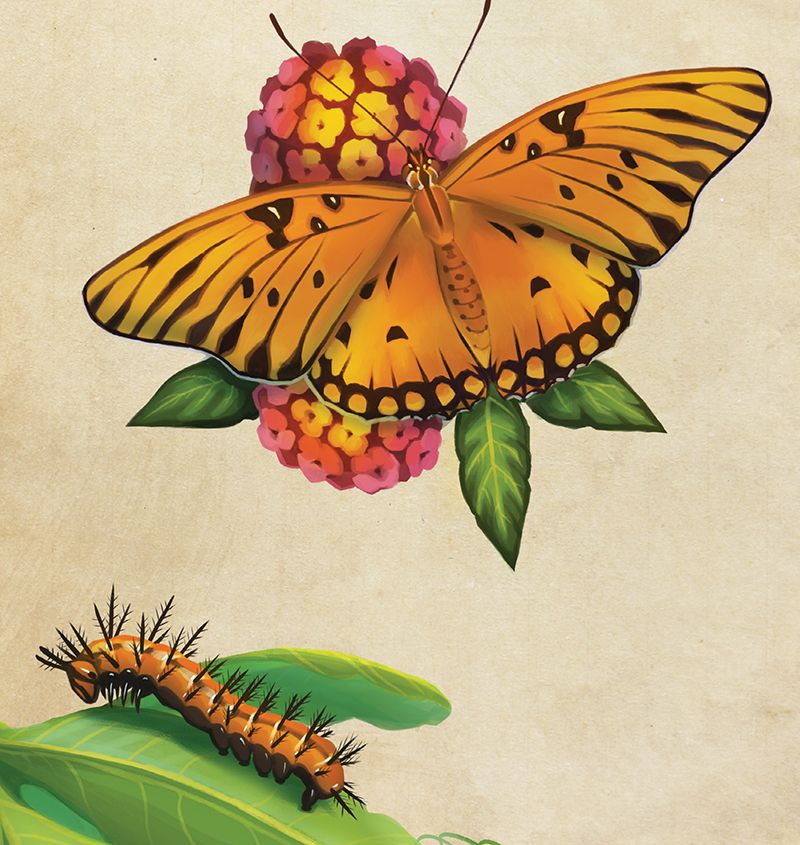Brightly striped and spotted in orange and black, the colorful Gulf fritillary (Agraulis vanillae) is a familiar sight in Lowcountry fields and gardens.

The butterflies, a distant cousin of the monarch, also go by the names “silverspots,” for the grey, metallic markings on the underside of their wings, and “passion butterflies,” for their close relationship with the passionflower, a favored host plant for females laying eggs
Flower Power - As butterflies probe for nectar, they visit a variety of wildflowers. The Gulf fritillary’s favorite food plant is lantana with its multi-clustered blooms. While feeding, butterflies become pollinators, yet given their long thin legs, they don’t pick up as much pollen on their bodies as bees do while moving from one plant to another.
Checkered Past - The name comes from the Latin word fritillus, which generally translates to “chess board,” for the checkered pattern on the butterfly’s wings. It harkens back to ancient Rome and the glass cup called a ”fritillary” that was used for shaking the black and white dice used in gaming.
Creative Camouflage - Given the similarity of stripes, spots, and coloration, the Gulf fritillary is often mistaken for its cousin, the monarch butterfly. The markings on both butterflies serve as camouflage, protecting them as they rest in dappled sun and shade.
Protective Aroma - Males and females have glands on their abdomens that, when sensing danger, produce chemicals with an odor that predators, such as birds, find offensive. This defense mechanism also works when fighting over territory with other butterfly species.
Follow the Sun - While their main habitat is the Southern United States, these far-ranging butterflies make two migrations a year. During summer they can be seen as far north as New York; likewise some go as far south as Mexico and Central America during cold months to spend the winter in a frost-free area. Given the mild Lowcountry winters, they sometimes can be found here year-round.
A Change of Pace - Like other butterflies, Gulf fritillaries go through a metamorphosis, during which the same living organism completely changes its appearance, transitioning from egg to pupa, caterpillar to butterfly. The cycle begins when the female lays her eggs, usually on a passionflower leaf. A caterpillar soon hatches, and, after seven to 14 days, forms a cocoon, or chrysalis, around its body. Between 11 to 21 days later, the butterfly emerges, spreads its wings, and flies.